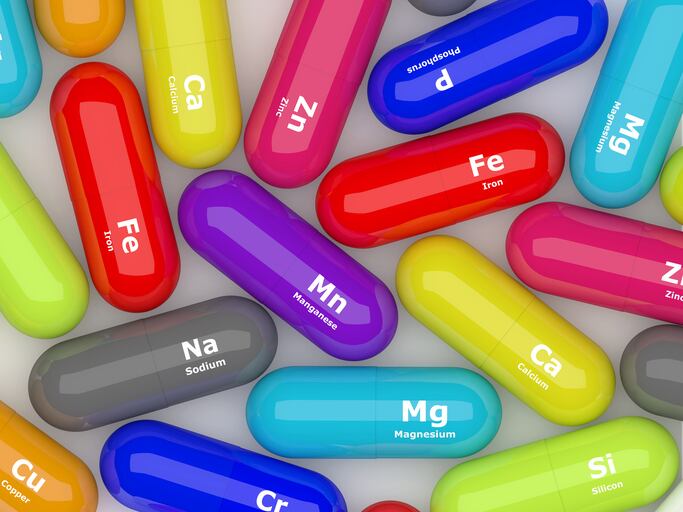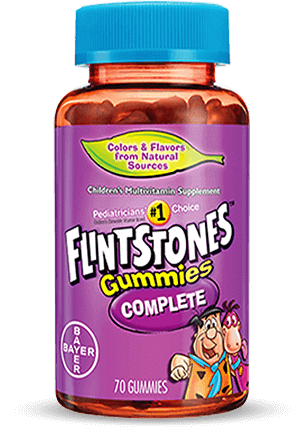Gummy products over all now account for $1 billion of the $41 billion supplement market in the US, the New York Times reported in 2017, citing data from IBISWorld and the Nutrition Business Journal.
The same data revealed that, looking at multivitamins specifically, gummy multis make up 7.5% of the $6 billion category.
Market demand is pushing manufacturers to find new ways to innovate in the format, which is notoriously difficult to work with, especially when it comes to loading in minerals while ensuring stability.
“It should not be assumed that all of the ingredients are being properly released and absorbed from the gummy matrix without proper trials,” Kevin Yan, M.Sc., director of certification and analytics at Nutrasource, told NutraInrgedients-USA.
Among its many capabilities, Nutrasource helps companies test products for active ingredients or nutrition and supplement facts panel verification.
“Companies that have decided to utilize a gummy matrix as the delivery form for their products should be taking the proper steps to ensure that the contents are being released for absorption by the end user,” he added.
“For confirmation that active ingredients have survived and are present in the finished product, proper testing methods are required. These methods should be able to extract the active ingredients from the gummy matrix in order to provide proper quantification.”
Mineral loading
One of the toughest parts of designing a multivitamin in gummy form is adding in minerals.
“Anytime you’re formulating with minerals, especially bulky ones like calcium or magnesium…you’re going to get a very bulky tablet, and most people don’t want to swallow big tablets. That’s why gummies are so appealing,” said Taryn Forrelli, ND, VP of products at gummy supplement company Olly.
The three-year-old gummy brand Olly can be found in major retailers like Walgreens, CVS, GNC, and Target. The company’s annual revenue is $50 million and growing.
“Gummies do have the unique challenge of not only the space, but in some cases, the minerals can actually interfere with the actual gelatin or pectin bonds. You can have issues like softness or stability issues over time.”
Forrelli added: “What we’ve done with our formulations, we’ll try different forms of minerals. In many cases, it makes a difference. Some time you compensate by adjusting the level of gelatin or pectin to strengthen the bond.”
Dealing with cross-linking
Caitlin Jamison, market development manager for health and nutrition at Swiss Ingredient company Jungbunzlauer, explained that the texture issue comes from cross-linking, when polymer chains bond to another.
Minerals in multis: 'You’ll always find a mineral form that is going to suit the application'

Minerals aren’t the easiest nutrients to incorporate into multivitamins—they can greatly affect the taste, texture, and even bioavailability of a final formulation. We spoke with several suppliers and brands to learn how they tackle the difficulties minerals pose when formulating a multivitamin. READ MORE
“Minerals and hydrocolloids can have a lot of reactions, so you can cause a lot of cross-linking between different groups. If you have agar, if you have pectin, sometimes you’ll find something start-off real soft and then it ends up becoming hard candy,” she said.
Her recommendation is to use a highly micronized form so it’s extremely fine. This overcomes both taste and loading issues, she explained. “You don’t even notice any grit or any flavor issues.”
Jamison also said that Jungbunzlauer recommends clients to use citrates, which have slightly tart flavors. “Using tricalcium citrate in a gummy for example, it actually works really nicely. And a lot of people are afraid that it’s going to be gritty, because it’s not a readily soluble calcium.”
Some ingredients still pose a challenge
The gummy format has evolved over time along with the technological advancements in manufacturing dietary supplements.

“One of the bigger breakthroughs in gummy development has been the inclusion of DHA. Initially, capsules were the only way to offer DHA containing dietary ingredient combinations,” said Michael DeBiasi, general manager for nutritionals and digestive health at Bayer US.
His company manufactures the popular Flintstones vitamins, which date back to the late 1960s. The brand launched a gummy format in 2005.
“Today, DHA can be formulated into a vitamin/mineral containing gummy providing not only a robust, stabilizing matrix to deliver DHA, but also in an organoleptic, consumer enjoyable format.”
But a few ingredients still pose challenges to product development in the format, DeBiasi told us. “A few vitamins, like B1 and B2 are rarely found in gummy products due to unpleasant odor and taste.”
And touching on minerals, DiBiasi said that the amount of minerals put into the multivitamins are limited in Bayer’s gummy products. “Calcium is a bit more limited in a gummy—you can put it in gummies and we do—but the amounts we can put in are more limited than solid forms,” he said.
Is a delivery format focus hurting intake?
DeBiasi argued that he doesn’t think a focus on one delivery format necessarily means consumers are sacrificing intake over palatability.
“I think that the reason gummies are so popular is because it’s a more enjoyable form. It’s a better consumer experience. While I can’t speak quantitatively, it seems like the taste and form preference translates to greater compliance,” he said.
Forrelli concurred. “I don’t think we’re sacrificing in terms of the nutrition or benefit for palatability. With that said, these are multivitamins. They’re not meant to fulfill 100% of the requirement for every vitamin and mineral. It’s meant to help close the gaps and in some cases boost up levels of key nutrients beyond the DV if there is a health benefit associated with higher levels,” she said.
